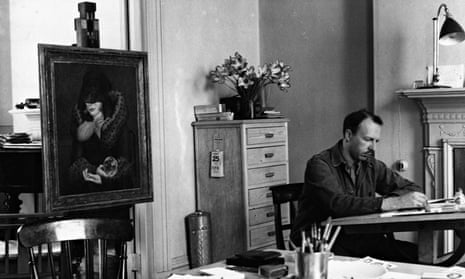The 16th Earl of Huntingdon (1901-1990), subject of the new book by the esteemed biographer Selina Hastings, spent the early years of his first marriage in Tahiti, worked as Diego Rivera’s assistant, and espoused leftwing views. But the more conventional aspects of his life may seem, to many modern readers, similarly exotic. There was his splendid name: Francis John Clarence Westenra Plantagenet Hastings. (The family is reputed to descend from the Comte d’Eu, a Plantagenet who arrived in England with William the Conqueror.) There was his childhood, spent in the care of nannies and with only brief daily encounters with his parents, in the drawing room after tea. Jack, as he was known, took part in his first hunt when he was five, and was present at his first kill two years later. At Eton, “he wasn’t above earning the occasional sixpence in the well-established, time-honoured manner”.
Certain life choices were expected of him. When his sister married a perfectly respectable if impecunious captain in the Cameron Highlanders, his formidable mother, Maud, predicted that she would have to “pig it for the rest of her days among a lot of middle-class people!”.
But Jack was to make an even worse choice: a foreigner, and a Catholic. Cristina Casati was the daughter of a marchese and of one of the richest women in Italy, but she cut no ice with these credentials. Soon after his marriage, Jack received this assessment by Maud of his wife: “She has bad manners & no charm & does not go down with people & her appearance is so odd. Must she dye her hair that dreadful colour… no one peroxides their hair nowadays.”
Selina Hastings, Jack’s daughter, had little more contact as a child with her own parents than Jack had enjoyed with his. While she came to love and respect her father, she continued to find him a somewhat remote figure. She writes that she is “far from ideal” as his biographer. But she is ideal, in fact. One reason, sadly practical at a time when straight biographies of all but stellar figures are out of fashion, is that she is the only person who could take on the task and sell it to a mainstream publisher. A second, evident from her previous lives of Waugh and Maugham and others, is her ability to recreate atmospheres, and to pinpoint the anecdotes that will animate them.
Here is the world of the Bright Young Things; young women and men whirling round grand ballrooms surveyed by mothers in diamond tiaras, with dinner at midnight and breakfast at four. As a guest at Glamis, Jack is present as Lady Elizabeth Bowes-Lyon falls for the Prince of Wales, who complains to his equerry that she is too fat – a poignant anecdote, in the light of their later hostilities as in-laws.
From these surroundings, Jack moves to a sheep farm in Australia (“the vast skies, the dusty red plains patchily covered in scrubby grass, the occasional grove of parched gum trees”), then to Tahiti, and then to America and his formative meeting with Rivera. Formative, too, were Jack’s observations – not invalidated by his social position among artists, film stars and magnates – of the horrors of the Depression. He soon became disillusioned with communism, but later in life served as a Labour peer.
What you do not get from the book is any sense of Jack’s stature as an artist, in part because of Selina Hastings’s acknowledged lack of qualifications as an art critic, and in part because the book includes only one, unimpressive reproduction. In every other respect, The Red Earl is a lively and touching memorial.
The Red Earl is published by Bloomsbury (£18.99) Click here to buy a copy for £14.99

Comments (…)
Sign in or create your Guardian account to join the discussion